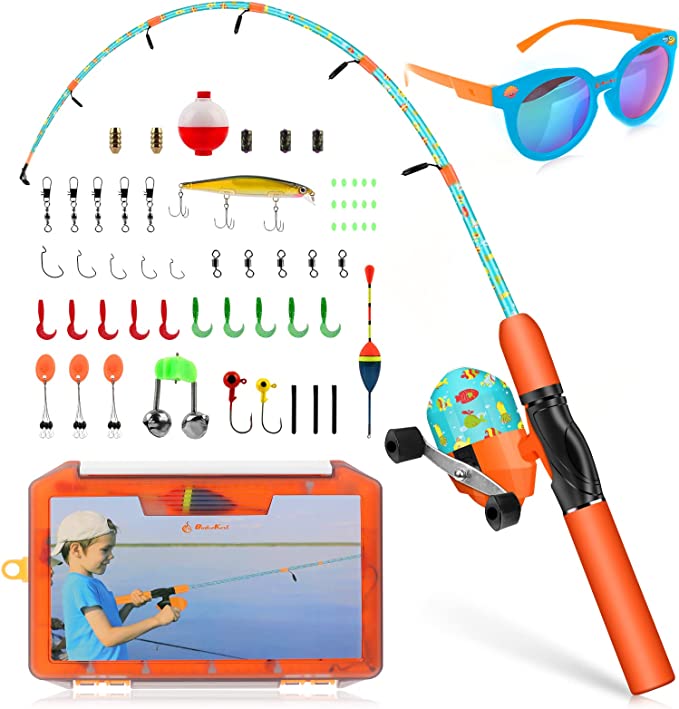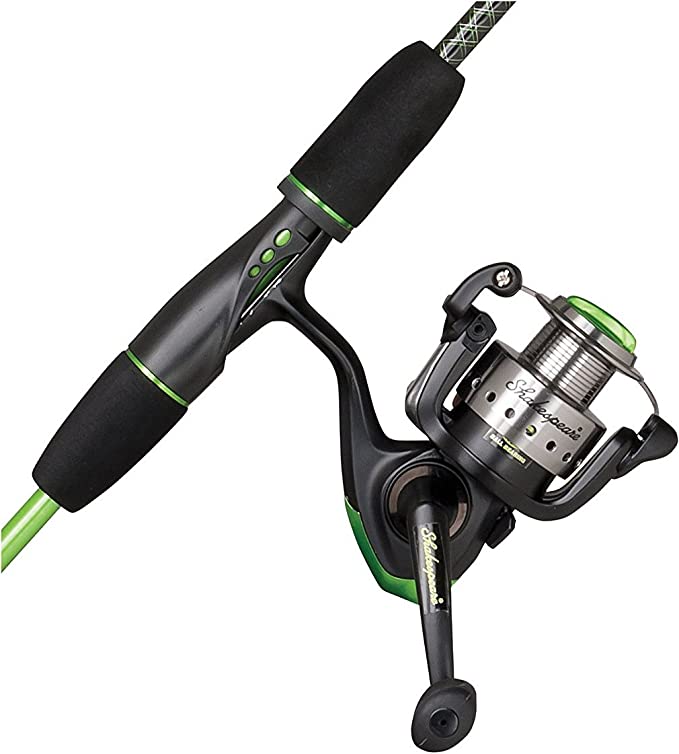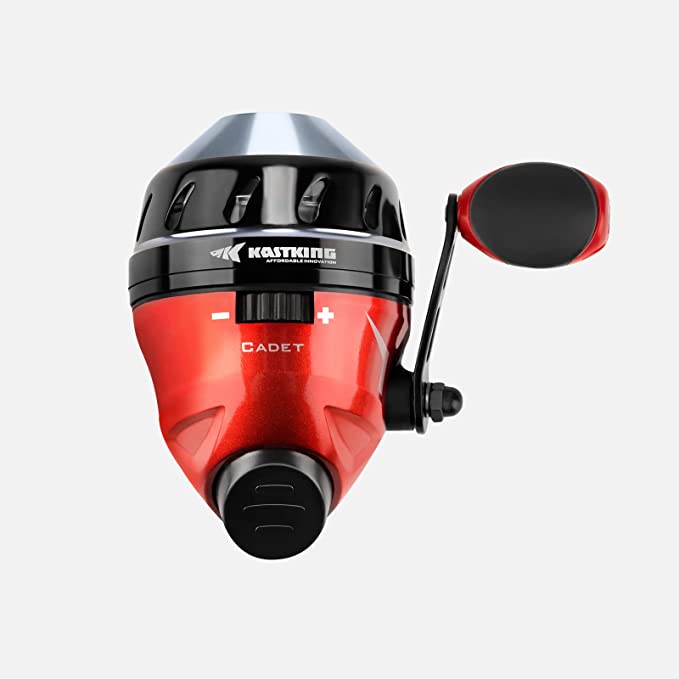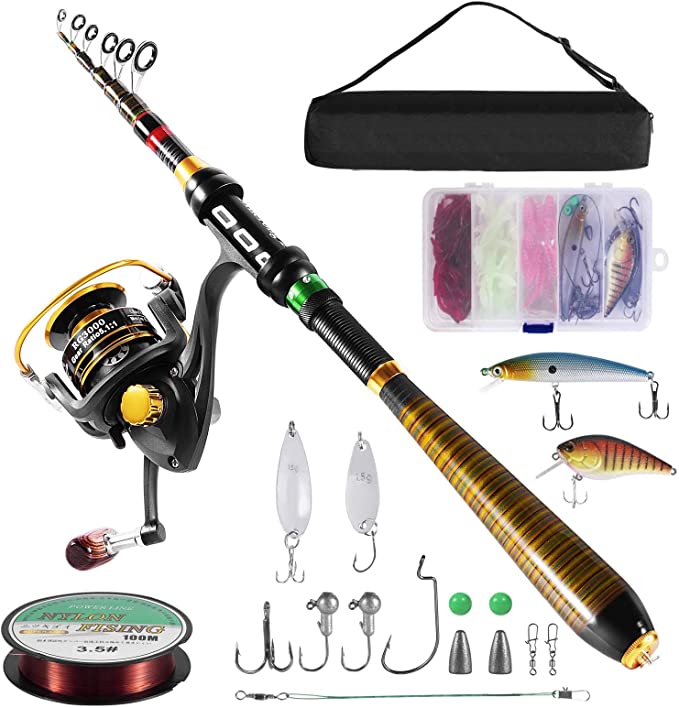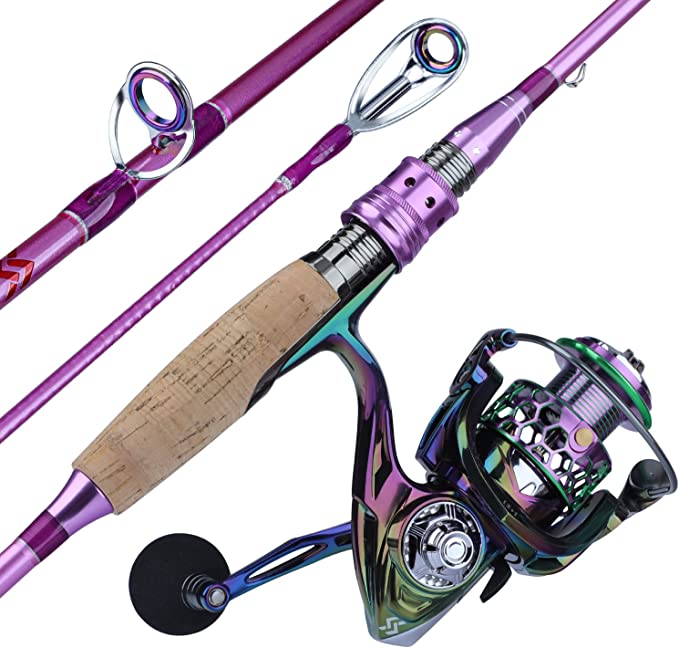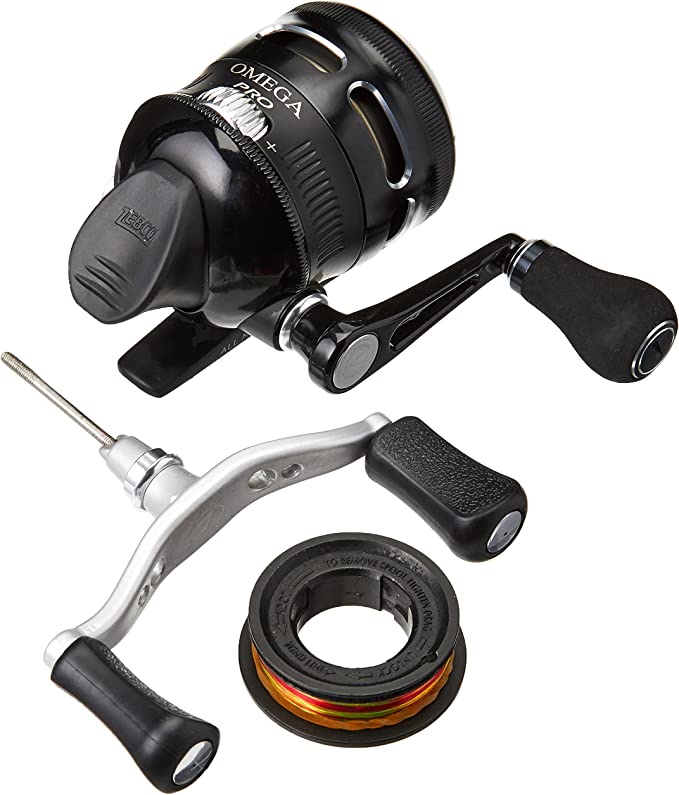Beyond the Dinosaurs: The Hidden Science of Your Child's First Fishing Rod
Update on Aug. 1, 2025, 4:20 p.m.
There’s a specific quality to the light on a late summer afternoon, the kind that filters through the trees and makes the surface of a lake glitter. I remember that light wrapped around my daughter’s small, determined shoulders as she gripped her first fishing rod. It was bright blue and emblazoned with a cartoon dinosaur, a detail she found profoundly important. I, on the other hand, was focused on something else: the subtle physics of the moment. Would the tool in her hands be a bridge to a new passion, or a barrier of frustration?
For any parent who loves the outdoors, the desire to pass that passion along is a powerful one. We walk into a sporting goods store, or browse online, and face a dizzying wall of choices for our kids. The loudest voices are often the graphics—the dinosaurs, the unicorns, the superheroes. But beneath the decals lies a hidden language of engineering, material science, and ergonomics. The success of that first cast, and all the ones that follow, often depends on how well a product speaks that language.
Let’s use a typical example, the QudraKast QK-RD-Bag, as our classroom model. It’s representative of many starter kits: colorful, complete, and accessible. By looking closer at its design, we can uncover the universal principles that separate a great learning tool from a mere toy.
The First Principle: The Ergonomics of Endurance
Before a child can learn the art of fishing, they must first be able to comfortably hold the rod. This is where ergonomics—the science of designing for human use—comes in. An adult’s rod is too long and heavy, creating a clumsy lever that a child cannot properly control. The QudraKast rod measures 1.2 meters (3.94 feet) and, more critically, weighs a mere 85 grams (2.89 ounces).
This feather-light specification is the single most important factor for a young angler. A child’s muscular endurance is a fraction of an adult’s. A heavy rod induces fatigue in minutes, turning excitement into a whining chore. An 85-gram rod, however, allows a child to make dozens of practice casts, developing crucial muscle memory and hand-eye coordination without strain. It ensures their limited attention span is spent on learning the motions, not fighting the equipment. The handle, made of soft, closed-cell EVA foam, further enhances this. It’s light, provides a secure grip for small, sometimes wet hands, and dampens vibrations, making the entire experience physically pleasant.
The Soul of the Rod: A Lesson in Forgiving Materials
The shaft of this rod is made of fiberglass, and this choice is a stroke of scientific brilliance for a beginner’s tool. In the world of high-performance fishing, carbon fiber is king, lauded for its stiffness and sensitivity. But for a child, stiffness is a liability.
The key scientific principle here is the modulus of elasticity—a measure of a material’s stiffness. Carbon fiber has a high modulus; it’s rigid and transfers vibrations instantly, but it’s also brittle. Fiberglass has a much lower modulus. It’s flexible and forgiving. Think of it this way: a carbon fiber rod is a stern, exacting professor who punishes every mistake. A fiberglass rod is a patient, encouraging teacher. When a child inevitably hooks a log, yanks the rod too hard, or bangs it against a rock, the fiberglass rod bends. It absorbs the stress, flexes deeply, and is far less likely to snap. This inherent durability provides a safety net for learning, allowing a child to experiment without the constant fear of breaking their new prize.
The Heart of the Cast: Engineering Away the Frustration
If there is one moment that makes or breaks a child’s interest in fishing, it is the cast. The dreaded “bird’s nest”—a catastrophic tangle of line—can end a trip before it truly begins. This is where the spincast reel on the QudraKast combo proves its worth. It is a small marvel of mechanical engineering designed for one purpose: to simplify the process.
Unlike more advanced reels, the spincast design encloses the line spool. When the large push-button on the back is pressed, an internal component called a line pickup pin retracts. The line can now fly off the spool freely when the rod is cast. Releasing the button engages the pin, stopping the line. It’s an intuitive, almost binary, process that minimizes the variables a child has to manage. It allows them to develop their fine motor skills on the simple, repeatable action of pressing and releasing a button. The reel’s 3.3:1 gear ratio is another subtle but important choice. It means every turn of the handle rotates the spool 3.3 times—a balance between speed and power that provides enough mechanical advantage for a child to easily retrieve a lure or a small fish without frantic cranking.
An Engineer’s Honesty: On Trade-offs and Teachable Moments
Now, for a moment of engineering honesty. In my own tackle box, I have a reel that once seized up mid-trip. My daughter watched, fascinated, as I sat on the riverbank, took it apart with a small multi-tool, and found the tiny grain of sand jamming the gear. It was a frustrating moment, but it became a lesson.
When looking at user feedback for a product like the QudraKast, some parents report the reel breaking or jamming quickly. This isn’t necessarily a sign of a “bad” product, but rather a transparent example of a fundamental engineering principle: cost engineering. To make a fishing kit affordable, compromises are inevitable. The most complex mechanical parts with moving gears, like the reel, are where these trade-offs are most apparent.
Instead of seeing this as a risk, we can frame it as an opportunity. A reel that jams can be a child’s first introduction to mechanics—a chance to look inside, see how things work, and maybe even fix it. It’s a moment to teach patience and the reality that tools, like people, are not always perfect. Similarly, feedback noting the included hooks are too large for small panfish is another brilliant, real-world science lesson. It’s a chance to explain why a tiny sunfish can’t bite a huge hook designed for a bass—a direct application of biology and physics. It teaches the most important rule of all tool use: you must match the tool to the task.
The Tool, The Teacher, The Tradition
In the end, that dinosaur-covered rod did its job. It was light enough for my daughter to handle, forgiving enough to survive her mistakes, and simple enough to grant her the profound satisfaction of casting a line all by herself. It was the right tool for that moment in her life.
Choosing your child’s first fishing rod is about looking past the cartoons and understanding the silent science within. Look for the lightness that promises endurance, the forgiving flex of fiberglass that encourages experimentation, and the simple mechanics that build confidence. Understand that in an affordable starter kit, you are accepting certain engineering trade-offs, and see those not as flaws, but as opportunities to teach.
Because the ultimate goal isn’t just to buy a piece of gear. It’s to purchase a key that can unlock the outdoors. The rod is a conduit—for patience, for understanding the natural world, and for passing a timeless tradition from your hands to theirs. Choose the one that tells the best scientific story, and it will help your child begin to write their own.
